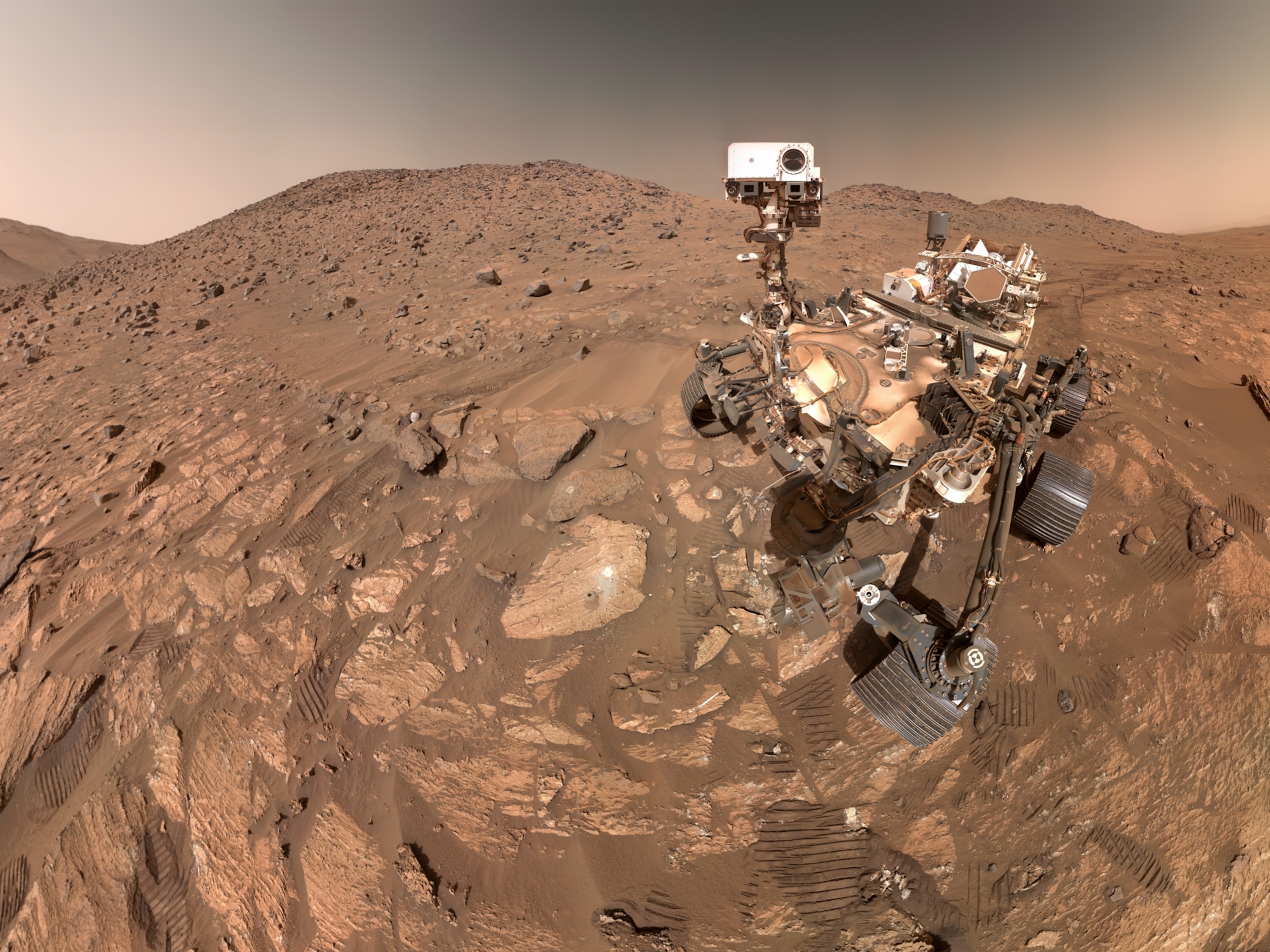
A Mars Mission for Budget Travelers
Twenty years and $100 billion could get us there, panel says.
Sending astronauts to Mars could be done at a small fraction of the cost of developing and flying the F-35 fighter jet, according to a rough estimate put forward by a panel of NASA, industry, and academic experts. The panel will present its findings at the second annual Humans to Mars conference starting Tuesday in Washington.
While a two-decade campaign to prepare a manned mission to Mars would certainly be expensive, it would cost nothing close to the $1 trillion figure that has sometimes been cited, the panel concluded. Instead the mission could be funded out of the current NASA budget, with allowances for inflation, along with contributions from other countries.
"One of our goals has been to destroy that '$1 trillion to send a human to Mars' myth, and we have," said Chris Carberry, executive director of the nonprofit ExploreMars group, organizers of the conference.
"It's feasible, it's affordable, and it can be done without impacting the federal budget or the NASA budget," he said. "This message is getting across, and there's more support now in Congress and the public for [sending] humans to Mars than ever before." (Related: "Proposed Mars Missions Challenge NASA Health Standards, Panel Warns.")

Big, Elusive Numbers
The expert panel puts the total cost of a 20-year program culminating in a manned mission to Mars in the range of $80 to $100 billion. NASA already spends around $4 billion a year on exploration programs; most of that is devoted to developing the Orion spacecraft and a new rocket that would one day carry astronauts to Mars or other deep-space destinations. The agency spends nearly $4 billion more on operating the International Space Station in low Earth orbit.
The idea that a manned mission to Mars would cost $1 trillion seems to be an urban legend, born a decade ago from a combination of sloppy reporting and bad arithmetic and then repeated many times. In contrast, the F-35 fighter program, which has been plagued by delays, really could cost more than $1 trillion, according to a recent report from the Government Accountability Office.
In the decade since the unaffordable-Mars myth was born, said Harley Thronson, a NASA senior scientist and a member of the expert panel, NASA and commercial space companies have gotten better at building and operating rockets for less money. At the same time, advocates of a manned mission to Mars have scaled back their ambitions, at least for the initial mission—framing it as more of a Lewis and Clark expedition than a transcontinental railway.
"We don't need to carry out every activity humans want to do on Mars—we just have to get there and back," Thronson said. "By focusing only on what we need to do, we achieve enormous cost savings." Some of the cost, he added, might be borne by international partners and private space companies—unlike the Apollo moon landings, which were paid for solely by American taxpayers.
A Mars mission cannot and should not be similar to the Apollo program, said another participant in the study, Joe Cassady of Aerojet Rocketdyne. The Mars program would play out incrementally over 20 or more years, taking advantage of technology improvements and lessons learned from the International Space Station and other space missions.
"What is absolutely essential is that we agree on a long-term path and pretty much stick to it," Cassady said. "No more 180-degree redirections; we need to get everyone on the same page."

All Together Now
That seems to be happening. The Humans to Mars conference will start Tuesday with a talk by NASA Administrator Charles Bolden, who is on record as saying that preparing for a human mission to Mars in the early 2030s is among the most important goals of the agency. That reflects the expressed view of President Obama.
What's more, support for that goal is to be found on both sides of a badly divided Congress. After the House Space Subcommittee passed a NASA authorization bill earlier this month, Chairman Steven Palazzo said, "The agreement before us today makes absolutely clear that NASA's goal for the human spaceflight program should be to send humans to Mars."
Ranking Democratic member Donna Edwards concurred, adding that the amendment is "requiring NASA to develop an informed and realistic 'road map' to get this nation to Mars."
"I think many in the space community believe NASA's planning for a set of missions to ultimately get us to Mars has become more coherent and consolidated," said John Logsdon, professor emeritus at George Washington University's Space Policy Institute, which is cosponsoring the Humans to Mars event. "There's little debate that Mars is the goal."
Cost Still Matters
There is far less agreement about the issue of affordability, however. Last week, Logsdon said, several members of the NASA Advisory Council—which advises Bolden and NASA—said that any plans for a landing on Mars in the 2030s were unrealistic, given budget constraints. Sending astronauts to orbit Mars without landing might be possible, they said. (Related: "Mars Flyby Proposed for 2021 NASA Astronaut Mission.")
Many scientists, of course, still question the need for manned missions to Mars or anywhere else. Harley Thronson's former deputy at NASA, Giulio Varsi, said that in a world increasingly embracing driverless cars, drones, and virtual sports, remote-controlled missions are clearly the way to go.
Such arguments have always been buttressed by the extreme cost of manned missions. ExploreMars's Carberry hopes his group's findings on the affordability of a Mars mission will convince some skeptics.
Last year, he said, ExploreMars commissioned a poll that showed broad enthusiasm among the American public for a human mission to Mars-especially once misimpressions about the size of the NASA budget were corrected. Poll respondents put NASA's spending at about 2.5 percent of the total federal budget. In fact, the space agency spends less than 0.5 percent of the total.







